17.1
Strengthen domestic resource mobilization, including through international support to developing countries, to improve domestic capacity for tax and other revenue collection.
強化國內的資源動員,包含國際支援開發中國家,以促進其徵稅與廣納財源的能力。
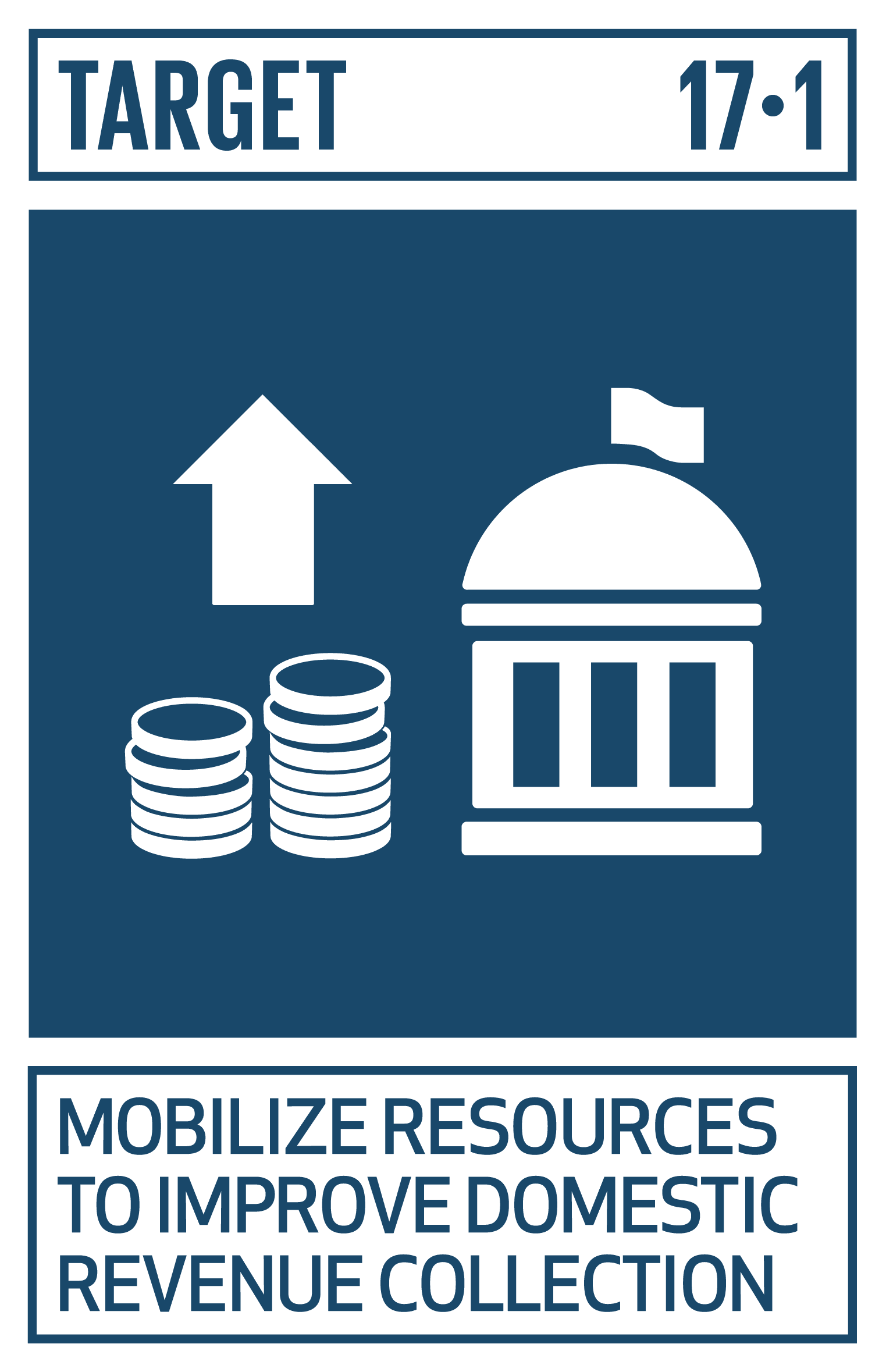
Strengthen domestic resource mobilization, including through international support to developing countries, to improve domestic capacity for tax and other revenue collection.
強化國內的資源動員,包含國際支援開發中國家,以促進其徵稅與廣納財源的能力。

Developed countries to implement fully their official development assistance commitments, including the commitment by many developed countries to achieve the target of 0.7 per cent of ODA/GNI to developing countries and 0.15 to 0.20 per cent of ODA/GNI to least developed countries ODA providers are encouraged to consider setting a target to provide at least 0.20 per cent of ODA/GNI to least developed countries.
已開發國家全面落實政府開發援助(ODA)承諾,包含已開發國家應提供開發中國家0.7%的國民所得毛額(GNI)作為ODA,以及0.15-0.2%給最低度開發國家。而國際也鼓勵已開發國家提供至少0.2%的GNI給最低度開發國家。
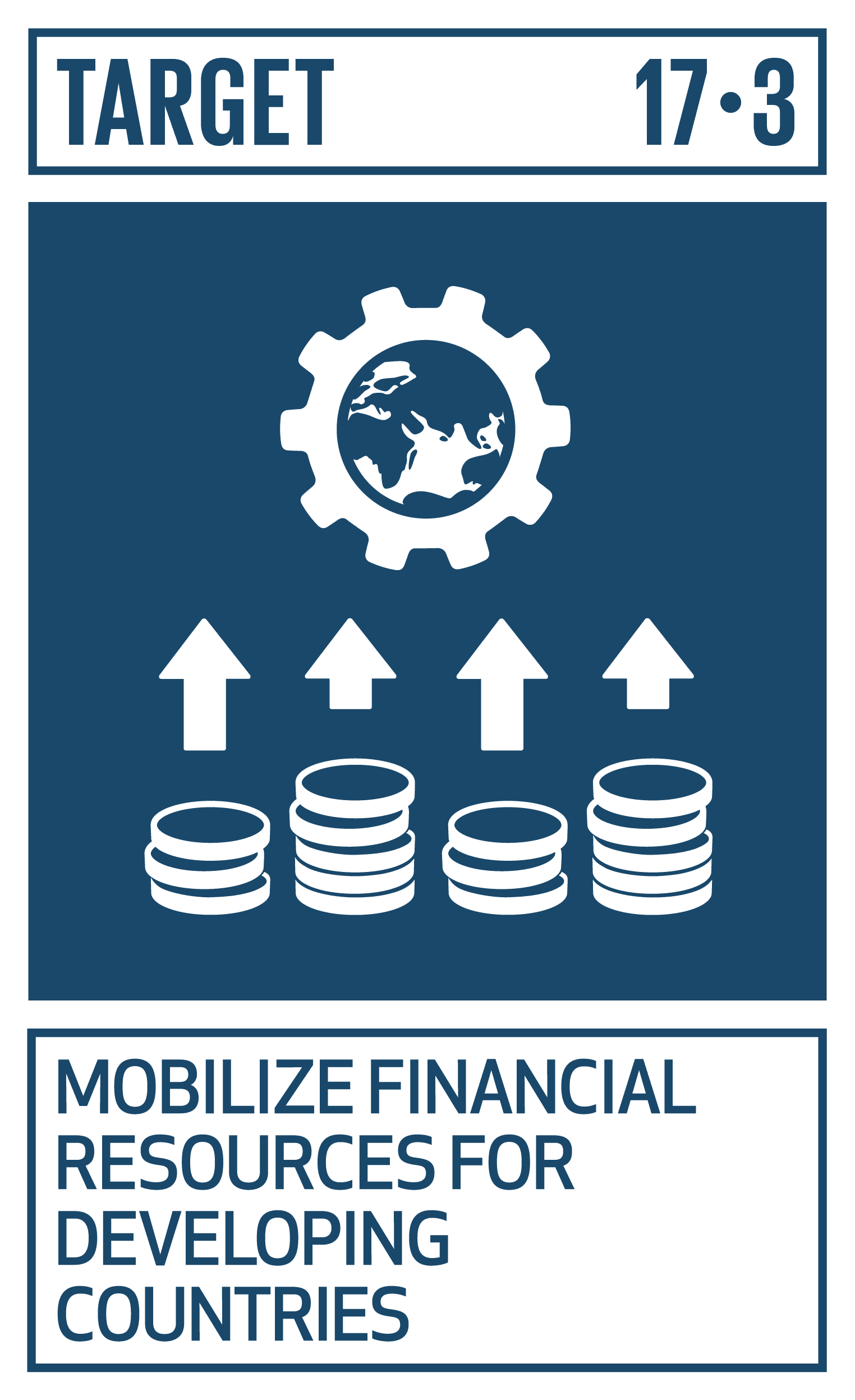
Mobilize additional financial resources for developing countries from multiple sources.
為開發中國家動員各方的經濟資源。

Assist developing countries in attaining long-term debt sustainability through coordinated policies aimed at fostering debt financing, debt relief and debt restructuring, as appropriate, and address the external debt of highly indebted poor countries to reduce debt distress.
以合作性的政策幫助開發中國家增進債務融資、債務舒緩及債務重整的能力,提升該國長期債務清償能力;並協助高度負債國家處理外債以降低債務壓力。
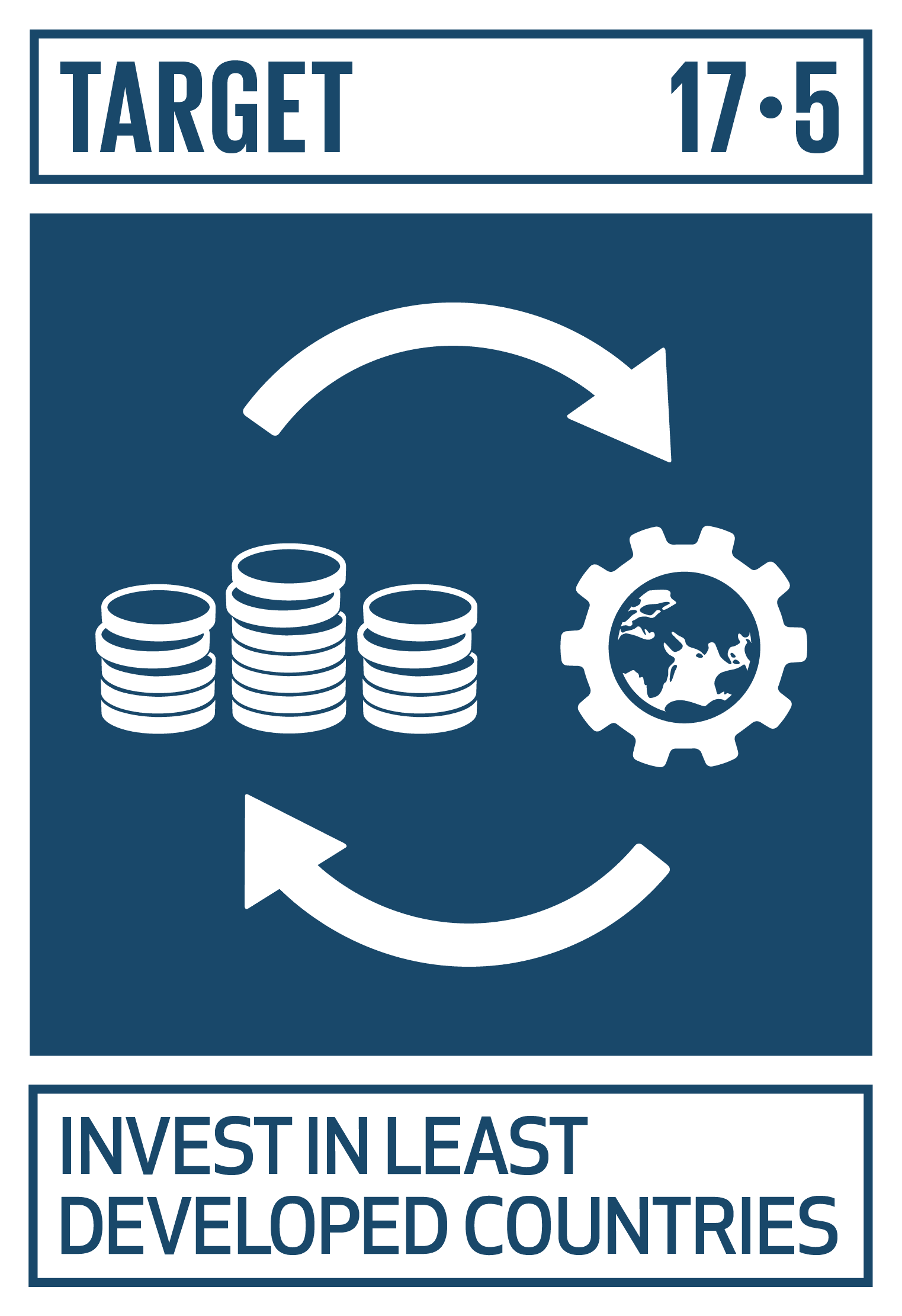
Adopt and implement investment promotion regimes for least developed countries.
在最低度開發國家採用投資促進政策。

Enhance North-South, South-South and triangular regional and international cooperation on and access to science, technology and innovation and enhance knowledge sharing on mutually agreed terms, including through improved coordination among existing mechanisms, in particular at the United Nations level, and through a global technology facilitation mechanism.
加強在科學、技術和創新領域的南-北、南-南、三角形區域與國際合作,並且提高以雙方認可的術語進行的知識交流。可透過包含協調改善現有的機制(尤其是在聯合國層級)與全球技術促進機制(TFM)達成。

Promote the development, transfer, dissemination and diffusion of environmentally sound technologies to developing countries on favourable terms, including on concessional and preferential terms, as mutually agreed.
提供開發中國家有利、優惠與特許的條件,促進其無害於環境的科技發展、轉移和擴散。
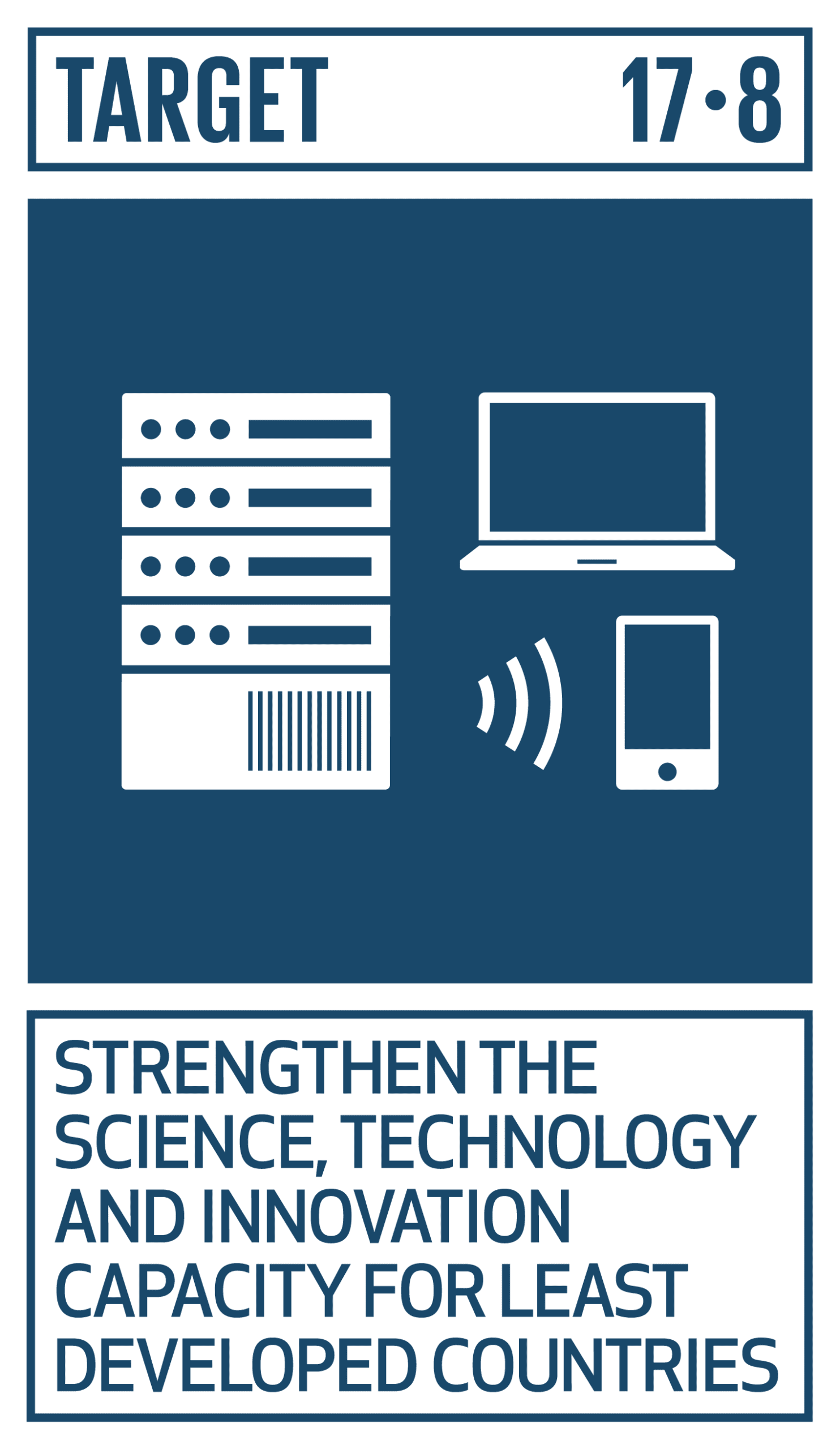
Fully operationalize the technology bank and science, technology and innovation capacity-building mechanism for least developed countries by 2017 and enhance the use of enabling technology, in particular information and communications technology.
在2017年之前,全面運作技術銀行(The United Nations Technology Bank),為最低度開發國家創建培養科學、科技與創新能力的機制,並提升科技技術的使用度,尤其是資訊與通信科技。
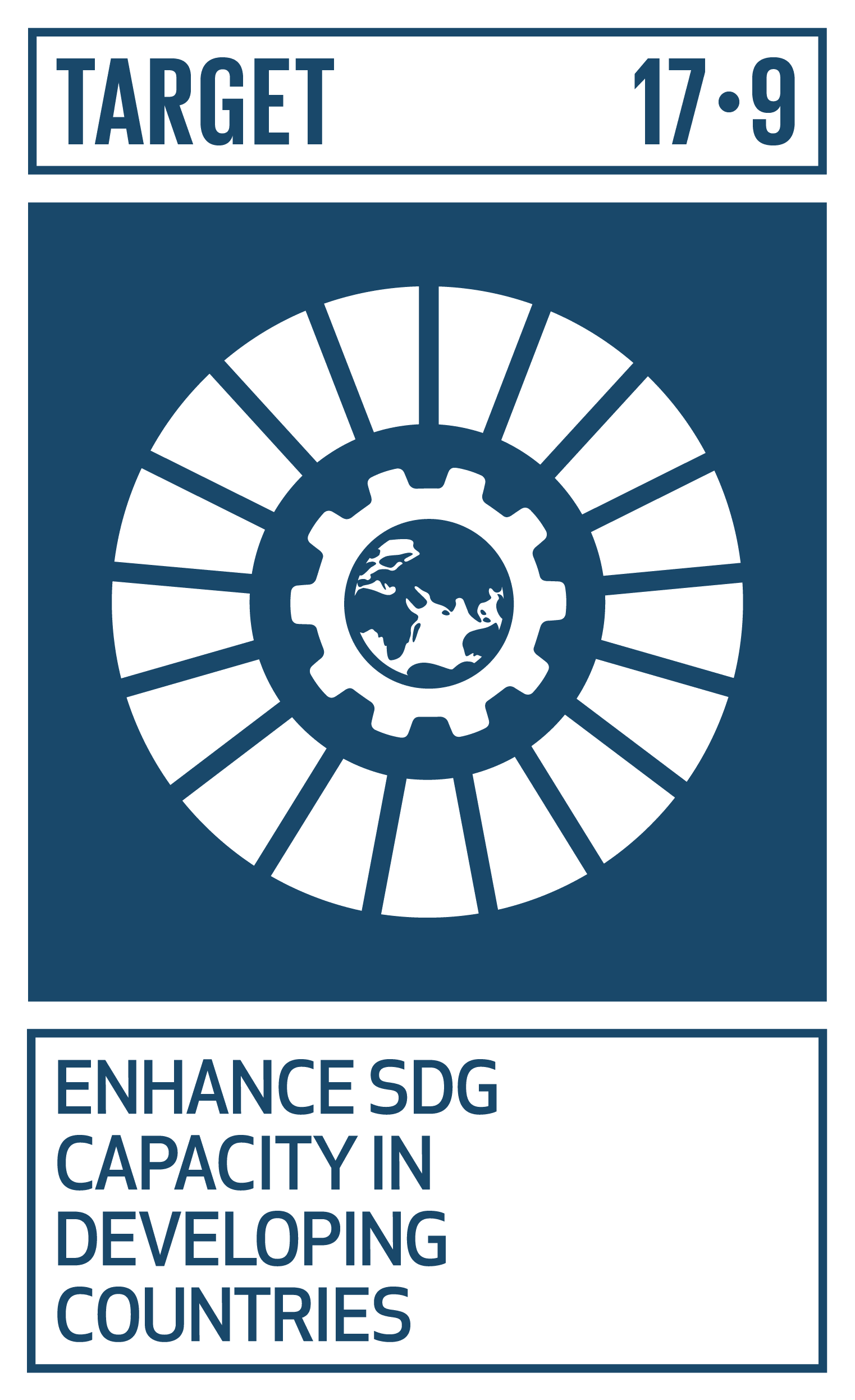
Enhance international support for implementing effective and targeted capacity-building in developing countries to support national plans to implement all the sustainable development goals, including through North-South, South-South and triangular cooperation.
為了落實所有永續發展目標,加強國際支援開發中國家實施有效且具目標的能力培養計畫,包含南-北、南-南、三角形區域與國際合作。
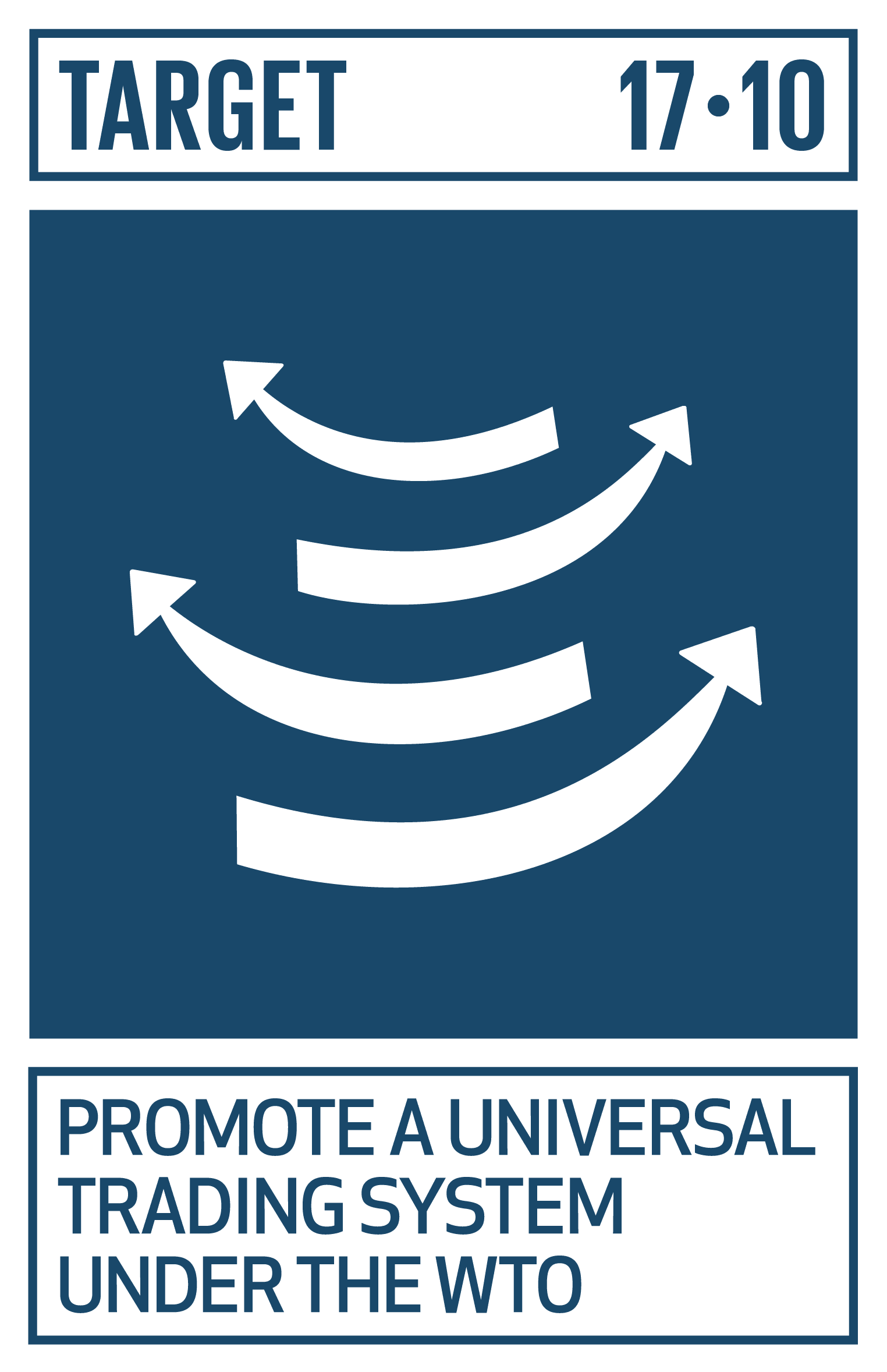
Promote a universal, rules-based, open, non-discriminatory and equitable multilateral trading system under the World Trade Organization, including through the conclusion of negotiations under its Doha Development Agenda.
在世界貿易組織(WTO)下,促進一個普遍、有規範依據、開放、無歧視、公平且多邊的貿易系統,包含在杜哈發展議程中達成協議。
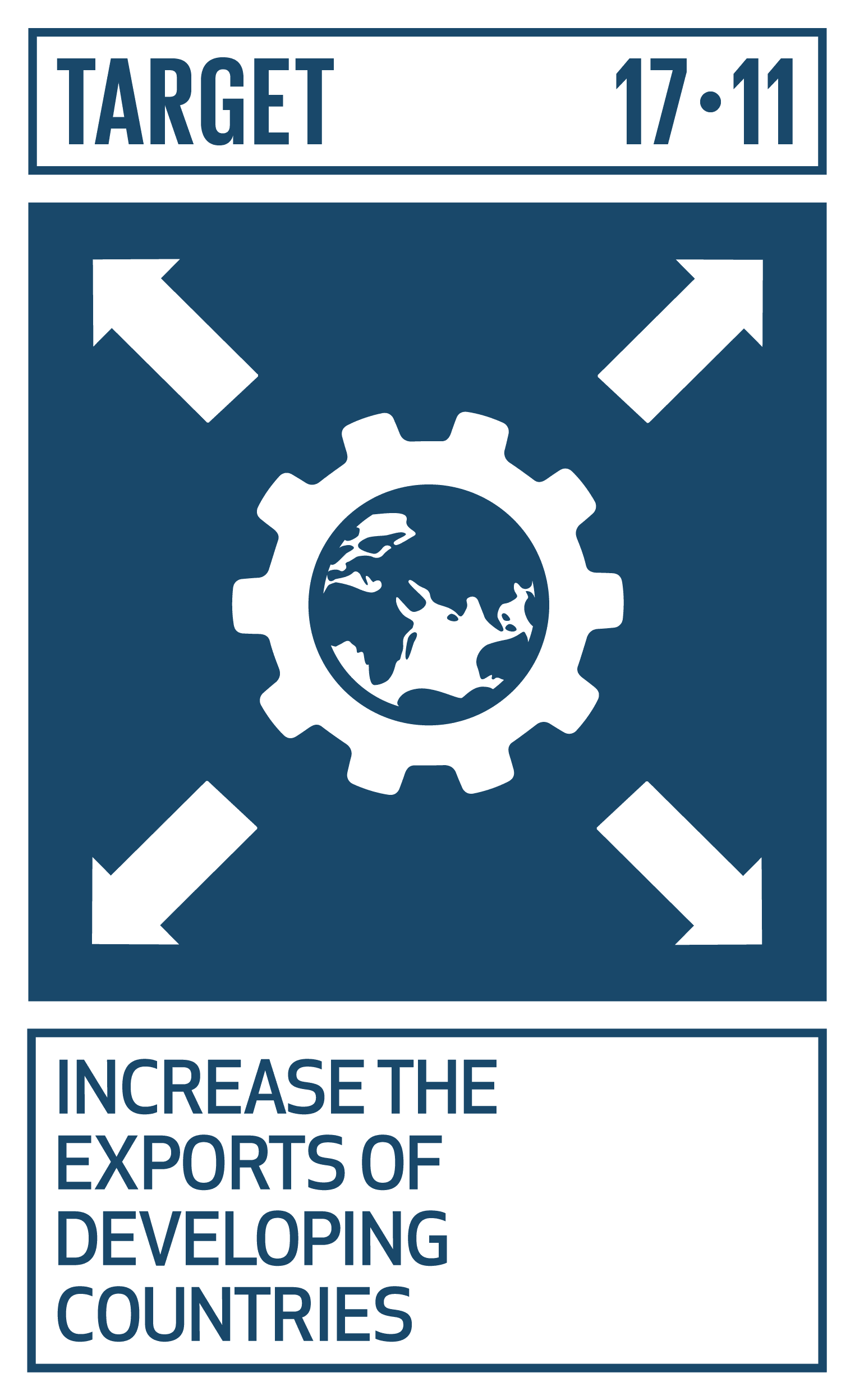
Significantly increase the exports of developing countries, in particular with a view to doubling the least developed countries’ share of global exports by 2020.
大幅提升開發中國家的出口,並在2020年前使最低度開發國家出口的占比提升一倍。
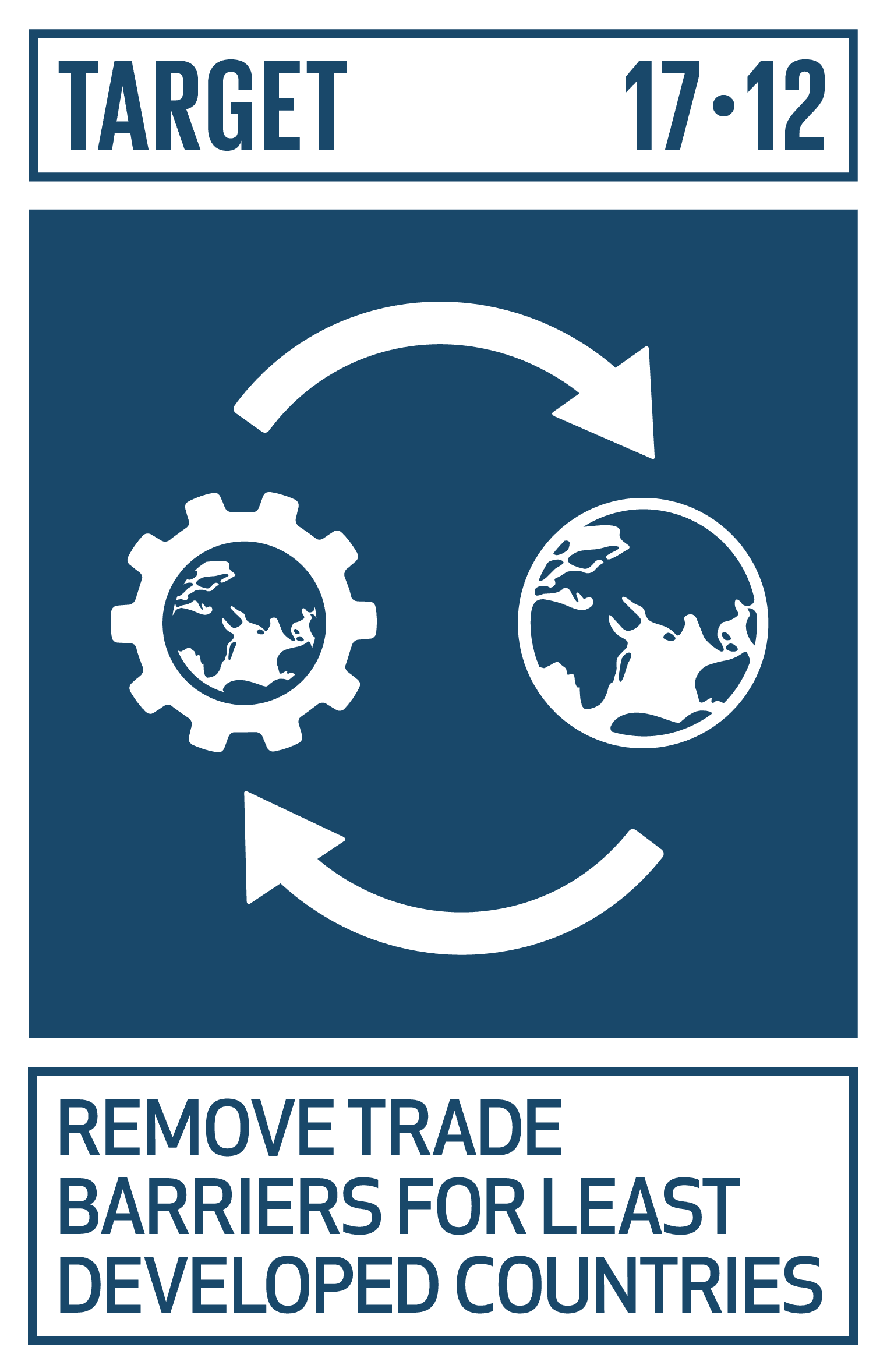
Realize timely implementation of duty-free and quota-free market access on a lasting basis for all least developed countries, consistent with World Trade Organization decisions, including by ensuring that preferential rules of origin applicable to imports from least developed countries are transparent and simple, and contribute to facilitating market access.
依照世界貿易組織(WTO)的決議,對所有最低度開發國家提供無期限的免稅、無配額限制的市場管道,並且確保最低度開發中國家的優惠性原產地規則,均是透明、簡單且有助於進入市場的。

Enhance global macroeconomic stability, including through policy coordination and policy coherence.
提升全球整體經濟的穩定性,包括相關政策的協調與連貫。

Enhance policy coherence for sustainable development.
提升政策於永續發展上的一致性。

Respect each country’s policy space and leadership to establish and implement policies for poverty eradication and sustainable development.
尊重各國的政策空間和政治領導,以利建立和實施消除貧窮和永續發展的政策。
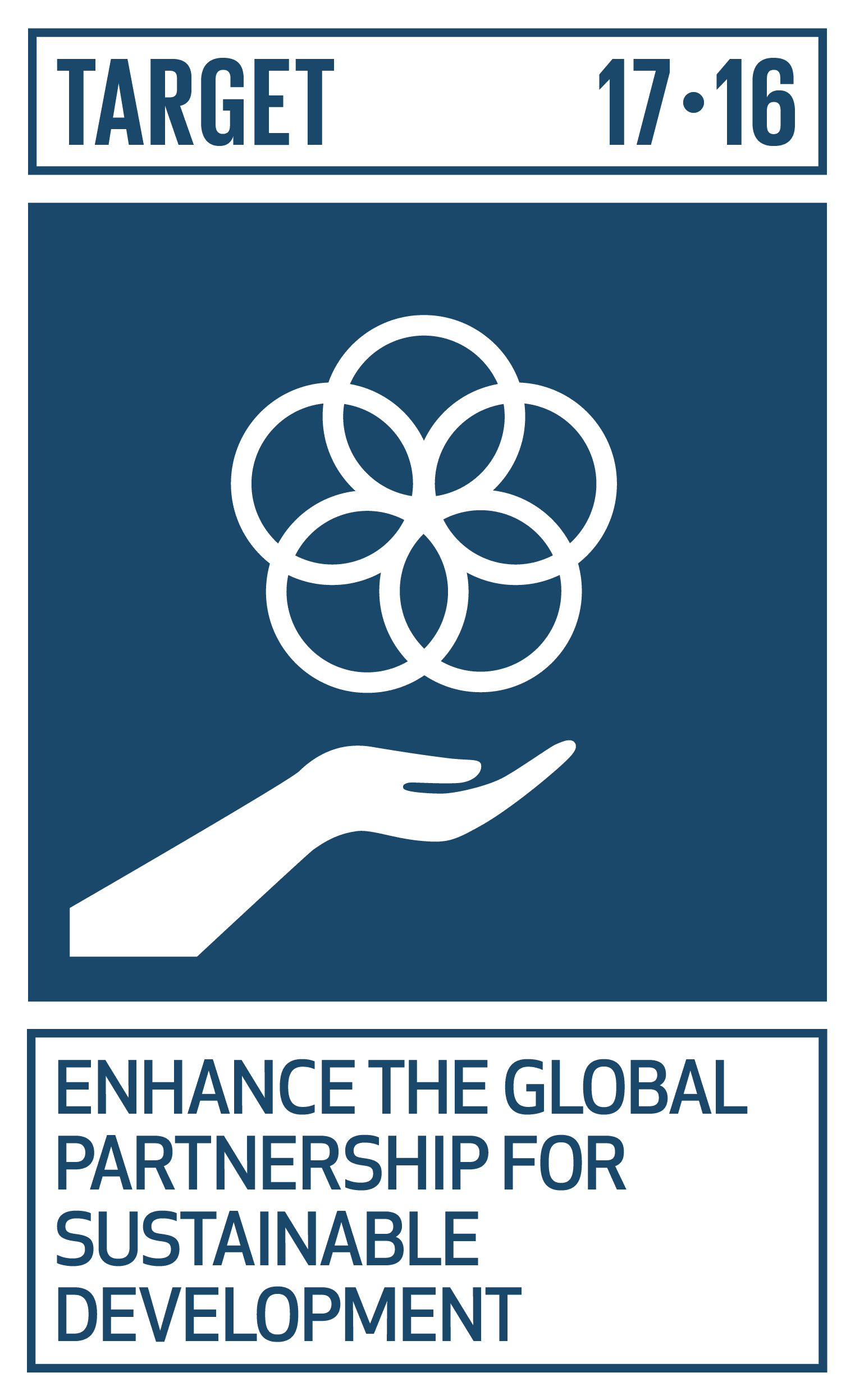
Enhance the global partnership for sustainable development, complemented by multi-stakeholder partnerships that mobilize and share knowledge, expertise, technology and financial resources, to support the achievement of the sustainable development goals in all countries, in particular developing countries.
提升國際間為了實現永續發展目標發展的夥伴關係,並以多方利益相關者的夥伴關係為輔,動員與分享知識、專業技術、科技與經濟資源,以支持所有國家,尤其是開發中國家,落實永續發展目標。

Encourage and promote effective public, public-private and civil society partnerships, building on the experience and resourcing strategies of partnerships.
依據夥伴的經驗和資源策略,鼓勵並促進有效的公共、公私協力與民間夥伴關係。

By 2020, enhance capacity-building support to developing countries, including for least developed countries and small island developing States, to increase significantly the availability of high-quality, timely and reliable data disaggregated by income, gender, age, race, ethnicity, migratory status, disability, geographic location and other characteristics relevant in national contexts.
在2020年之前,為了提高收入、性別、年齡、種族、移民、身心障礙、地理位置,以及其他相關數據的品質、即時性和可靠性,加強支持開發中國家的能力培養,尤其是最低度開發國家和小島開發中國家。
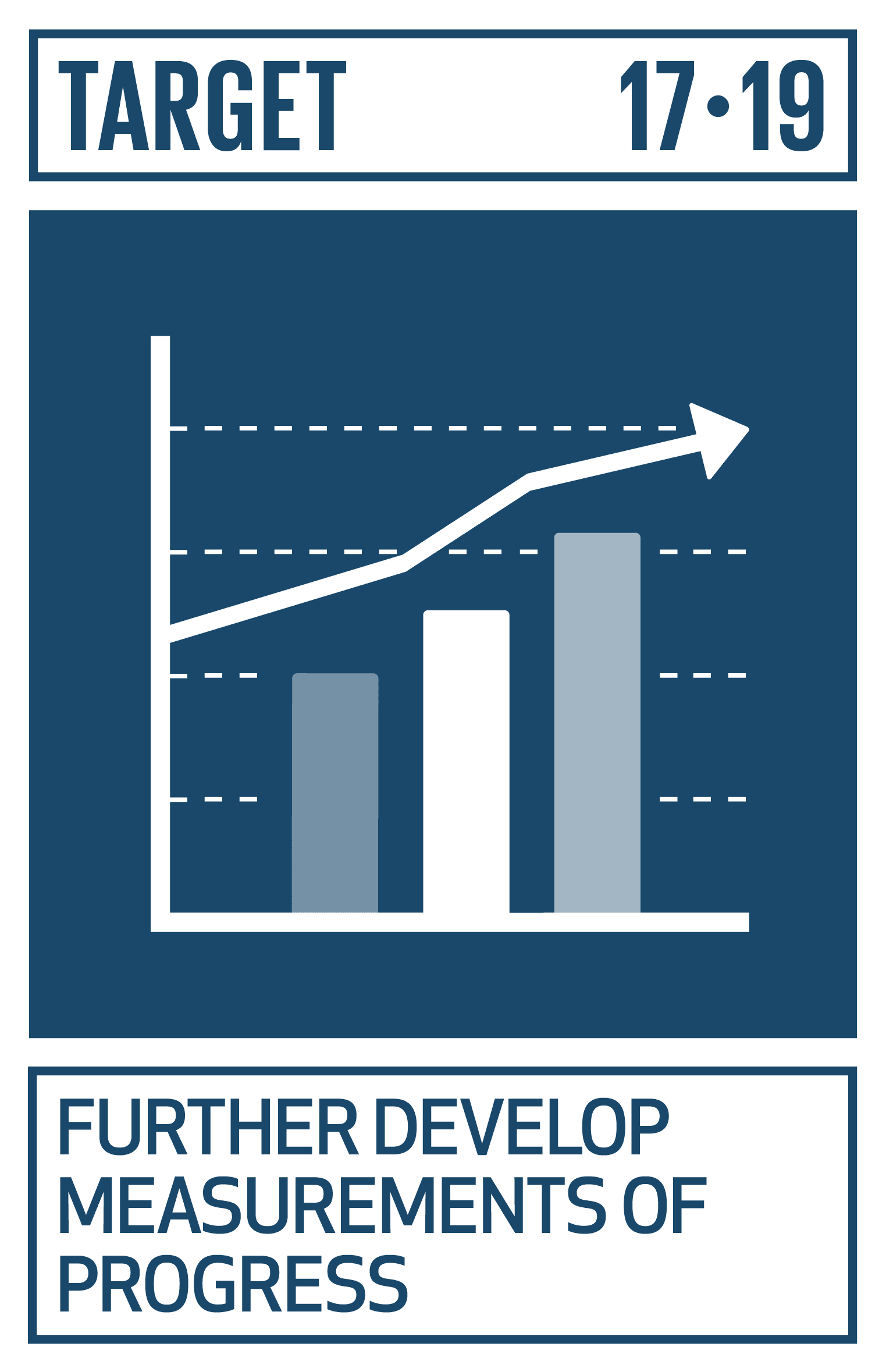
By 2030, build on existing initiatives to develop measurements of progress on sustainable development that complement gross domestic product, and support statistical capacity-building in developing countries.
在2030年之前,以現有的方案為基礎,建立各國對與國內生產總值相關的永續發展衡量指標,並支持開發中國家的統計能力培養。
2015 年 9 月 25 日,聯合國成立 70 週年之際,世界領袖們齊聚聯合國紐約總部,舉行「聯合國發展高峰會」,基於千禧年發展目標未能達成的部份,發佈了《翻轉我們的世界:2030 年永續發展方針》。這份方針提出了所有國家都面臨的問題,並基於積極實踐平等與人權,規畫出 17 項永續發展目標及 169 項追蹤指標,作為未來 15 年內(2030 年以前),成員國跨國合作的指導原則,而 17 項永續發展目標,都需透過169 項追蹤指標來進一步解釋,同時也透過追蹤指標,來評估永續發展目標是否被達成。
而 Impact Hub 作為全球最大的社會創新網,從2016年開始,Impact Hub Taipei 將聯合國永續發展目標(SDGs)融入品牌精神中並以此為號召,將永續的概念帶進學校、企業及公部門,串連更多夥伴一起加入永續行動的行列,透過夥伴關係達成永續發展目標,讓影響力從這裡開始發生!若您想了解如何讓企業內部員工認識永續發展,或是如何於學校授課課程中融入永續發展知識,都歡迎與我們聯繫,聯絡信箱 [email protected]。